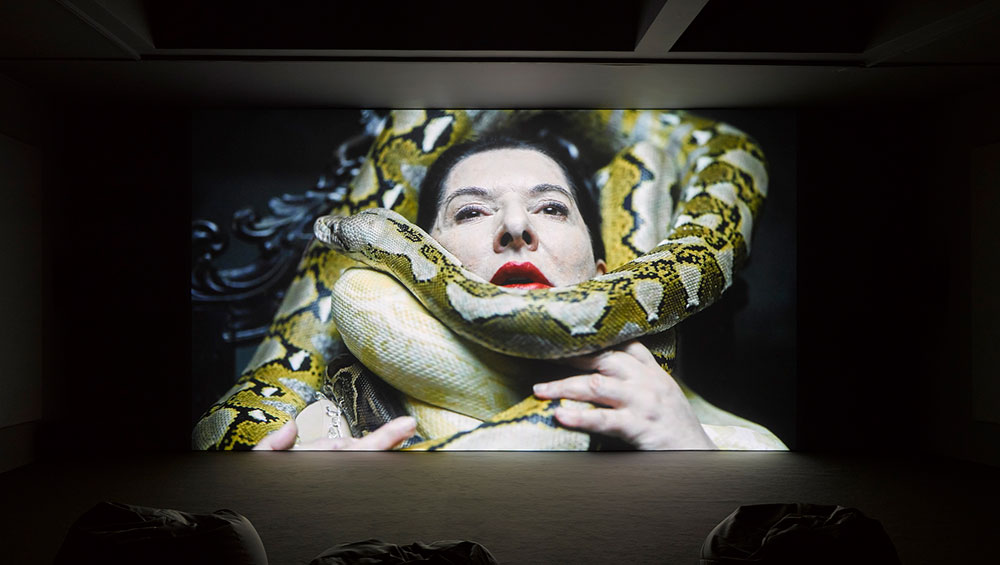
Marina Abramović: Seven Deaths, installation view, Lisson Gallery, Lisson Street, London, 14 September – 30 October 2021 © Marina Abramović, courtesy Lisson Gallery.
Lisson Gallery, London
14 September – 30 October 2021
by VERONICA SIMPSON
Marina Abramović is in London to launch a series of sculptures at the Lisson Gallery in Cork Street – an event not to be missed. She is an artist whose fame (and fortune) rest on her extraordinary ability to challenge us through her physical presence and her willingness to step outside the boundaries of what is usually acceptable between strangers, so it is not surprising that a decent show of arts writers have turned up and donned face masks to enter the gallery, lured by the prospect of meeting her. The sculptures are secondary – after all, sculpture is not what Abramović is known for. But, of course, it is no ordinary kind of sculpture she is showing here: it is a very new form that requires the investment of the viewer through their attention and movement.
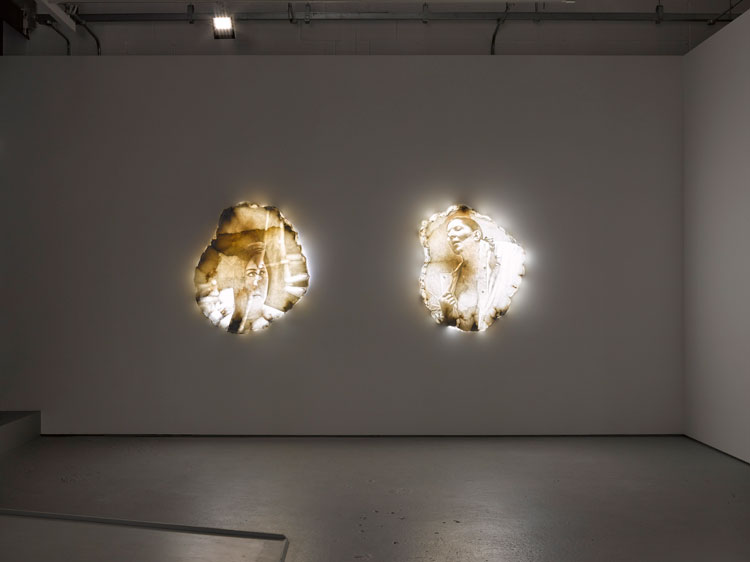
Marina Abramović: Seven Deaths, exhibition view, 22 Cork Street, London. 14 September – 17 October, 2021. © Marina Abramović, courtesy Lisson Gallery.
Against the blacked-out walls of the main gallery, seven alabaster shapes, lit from behind, appear to pulse with a spectral glow. Each one depicts Abramović acting out the final death scene from a famous opera in which the great diva Maria Callas is thought to have given the definitive performance. Abramović has made a film about Callas and these Seven Deaths, which you can see in the Lisson Street gallery, in which she herself plays Callas – though using Callas’s original recordings (Abramović admits that music is not her strong point). Through some almost magical process, the climactic images from these seven scenes have been transferred into alabaster, rendered 3D via the most delicate alabaster milling technique, using machinery refined over seven years of technological experimentation between Abramović and Factum Arte’s workshop in Madrid. The effect is hologrammatic: as you move past the “statues”, the imagery shifts from a layering of pencil-fine outlines into hyperreal, black-and-white, film-still clarity.
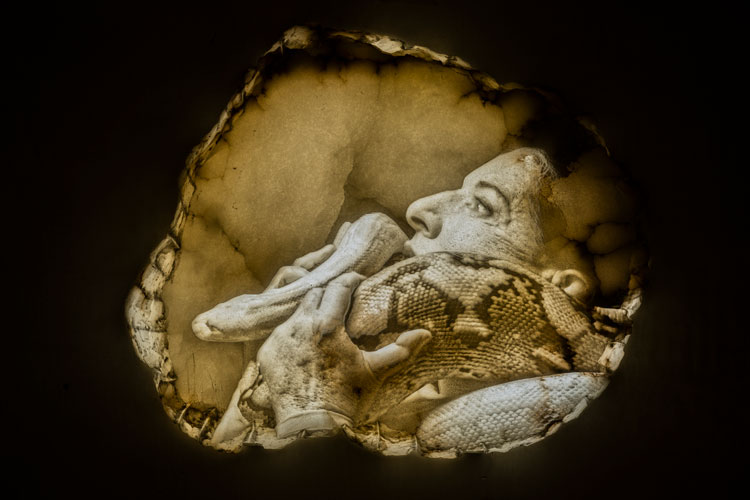
Marina Abramovic. Seven Deaths: The Snake, 2020/2021. Alabaster, custom light, 105 x 85 x 12 cm. © Marina Abramović, courtesy Lisson Gallery and Factum Arté. Photo: Oak Taylor-Smith.
Abramović’s talk with the assembled writers and critics – shown below – reveals a conversational style every bit as personal as her work, but also, at times, gloriously funny. Explaining her lifelong attachment to Callas - which began when, at the age of 14, the artist heard a recording in her grandmother’s kitchen – she says: “There were several reasons. Not just because she has the same nose as me, nor because she had a really bad mother like I did, not because she’s Sagittarius like I am, but also this incredible mixture between courage, strength and ability … she was so strong on stage and so emotional, and lonely and unhappy in her life. That was kind of an interesting mix. And the fact that really, she died for love.”
Happily, she says, she does not share that latter aspect, with Callas. Although she was deeply in love with her famous co-performer Frank Uwe Laysiepen, known as Ulay, for many years, when that relationship ended, her passion for work saved her, she tells us. Perhaps in a poetic way, by re-enacting those iconic moments where Callas dies for love, Abramović is ritually celebrating her own lust for life, giving thanks for her work, as both purpose and salvation.
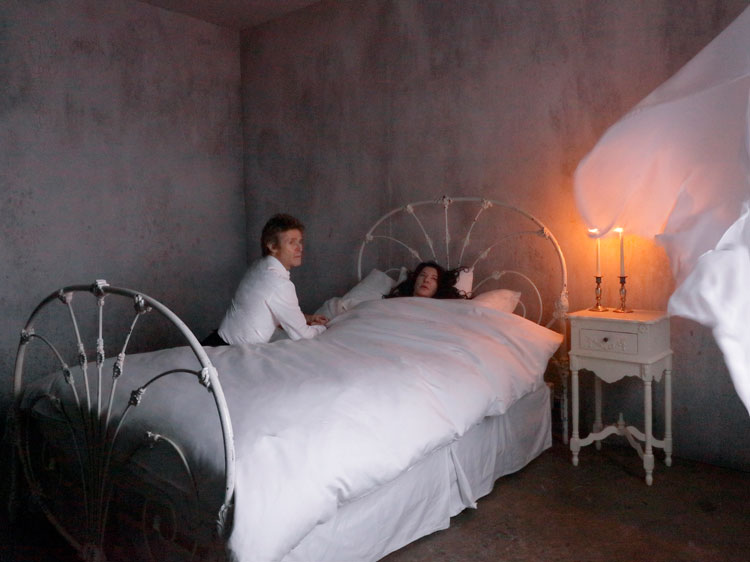
Marina Abramović, 7 Deaths of Maria Callas, 2019. Photo: Marco Anelli, Courtesy of the Marina Abramovic Archives.
Her Callas obsession has fuelled her work in recent years. She has now created a full-scale, live-action opera around the same theme – Seven Deaths of Maria Callas – which opened in Paris this autumn, then visits Athens, and will be in Berlin and Milan for 2022. She begins her talk in London by expressing the hope that it could be staged at the Royal Opera House in Covent Garden, because Callas loved Covent Garden. Directing opera is certainly a new art form for her, as is sculpture – a project she seemed very unsure of judging by what she says she told Factum Arte: “Performance art is an immaterial form – I can’t go there and make marble pieces. It would be totally a contradiction. And to make something to please the market, I don’t want that. I want something that has material and immaterial elements inside, life and death (at) the same time.”
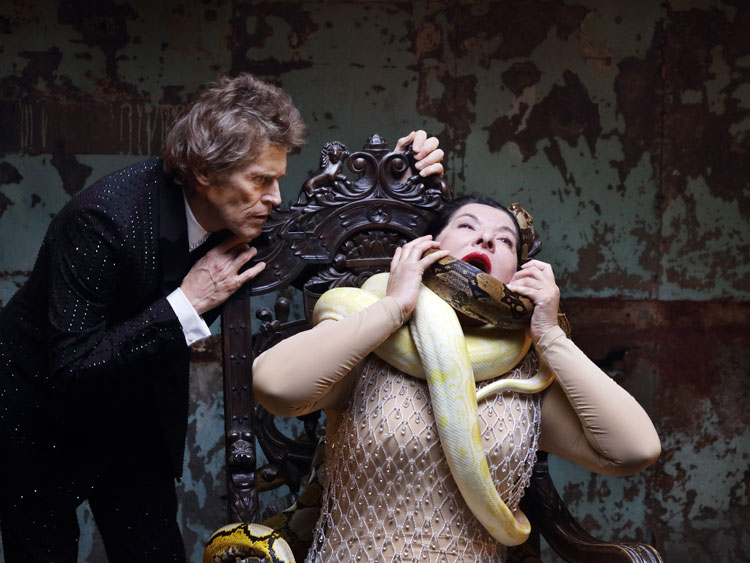
Marina Abramović, 7 Deaths of Maria Callas, 2019. Photo: Marco Anelli, Courtesy of the Marina Abramovic Archives.
Because these moments captured by the sculptures are taken from the actual filmed scenes, Abramovic claims them as an extension of her performance. But where the sculptures are intriguing, beautiful and tactile (she encourages us to touch them, as she herself does), the filmed part is – to me – less successful. For all that Abramović manages to maintain great intensity and gravity as she acts out Lucia di Lammermoor smashing mirrors to shards – one of which finally kills her – or Carmen (cross-dressing as a bullfighter, rather than a sultry siren) being gored by her nemesis (played, as in all the partnered scenes by Willem Dafoe), there is no respite in the long, slow burn of intense melodrama to each scene. And each death seems to take a good 10 to 15 minutes (and feels twice as long). Just witnessing two or three is exhausting – apart from the rare, and possibly unintentional, moment of comedy in Norma, in which Dafoe and Abramović swap genders and it’s Dafoe in a glittering gold dress who walks into the flames, with Abramović in full tuxedo.
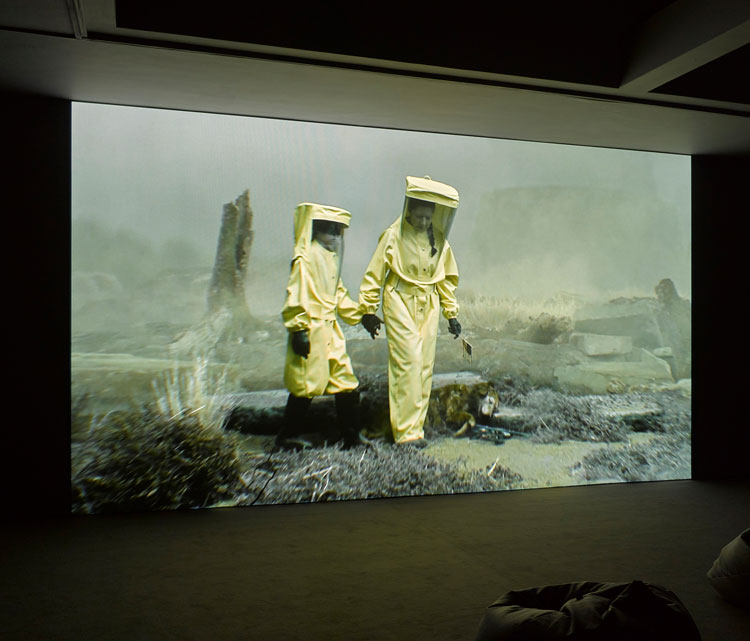
Marina Abramović: Seven Deaths, installation view, Lisson Gallery, Lisson Street, London, 14 September – 30 October 2021 © Marina Abramović, courtesy Lisson Gallery.
For the most part, the scenes are played out too slowly and too literally, apart from an unusual rendition of Madame Butterfly, set in some toxic, post-apocalyptic landscape, in which Abramović kills herself by ripping open her hazmat suit. In this, the lush operatic soundscape creates a thrilling contrast with the bleached out, sci-fi scene she presents, as she takes her last poisonous breaths.
After this intense concentration on Callas and calamity, Abramović declares: “I am definitely finished with dying.” She promises us that her show at the Royal Academy – originally scheduled for 2020 but now postponed until 2023 – will be called After Life.